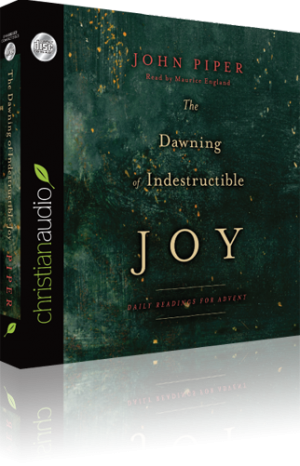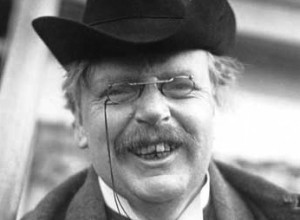Justin Taylor's Blog, page 90
December 3, 2014
A Conversation with Lecrae, Voddie, and Others on Ferguson
You can pull up a chair to watch and listen to this conversation with Lecrae Moore, Voddie Baucham, Phillip Holmes, James White, and B.J. Thompson on Ferguson, the gospel, the church, and the culture:
December 2, 2014
How You Can Help Distribute a Quarter of a Million Free “ESV Global Study Bibles” into Asia and Africa
December 1, 2014
Free Audiobook of the Month: John Piper’s Advent Readings
 Christian Audio if offering for free the audiobook for John Piper’s book, The Dawning of Indestructible Joy: Daily Readings for Advent (Crossway, 2014).
Christian Audio if offering for free the audiobook for John Piper’s book, The Dawning of Indestructible Joy: Daily Readings for Advent (Crossway, 2014).
You can also purchase a hardcopy or get the ebook for $0.99.
A Holiday Guide to Good Books for 3 to 7 Year Olds
 Robert Tracinski at the Federalist:
Robert Tracinski at the Federalist:
Children’s books are a field my wife and I have gotten to know pretty well over the past few years, and it has turned out to be far more important, interesting, and enjoyable than I ever would have guessed.
We haven’t quite made a comprehensive survey of the field, but we have been on the lookout for—and have been the recipient of—a constant stream of books for two very inquisitive young boys. Sherri and I have had the opportunity to sift through a lot of clunkers and to find some books that we truly love, which we love reading to our kids. The best part is that eventually they start reading them back to you.
I’d like to share some of what we’ve learned by offering a list of holiday gift ideas. These recommendations are mostly targeted at kids in the 3- to 7-year-old age range, because that’s what we have, though our oldest is a bit precocious so some of these recommendations might stretch up a few extra years. These selections have been extensively road-tested. They are the stories that have proven their ability to keep the attention of the kids and also be enjoyable for the adults, even the 37th time around. A good story is an end in itself, but many of these books also serve an educational purpose or offer wholesome themes and good values.
There is something else which we regard as just as important as a good story: good illustrations. By the end of the 20th Century, children’s book publishers somehow adopted the premise that books written for 5-year-olds should look as if they were drawn by five-year-olds. I blame Modern art, with its contempt for the technical skill of realistic rendering. We obviously disagree with this approach and think that raising a child on good, realistic illustrations is as important as teaching him to speak proper English.
You can read the rest here.
HT: Brian Auten
November 29, 2014
How to Get an Extra 30% Off Amazon Books Until Midnight of November 30
Amazon is running a deal you may want to check out.
And if you’re in the market for a Kindle, here are the best deals.
November 27, 2014
5 Quotes from G. K. Chesterton on Gratitude and Thanksgiving
 “I would maintain that thanks are the highest form of thought, and that gratitude is happiness doubled by wonder.”—G. K. Chesterton
“I would maintain that thanks are the highest form of thought, and that gratitude is happiness doubled by wonder.”—G. K. Chesterton
“The aim of life is appreciation; there is no sense in not appreciating things; and there is no sense in having more of them if you have less appreciation of them.”—G. K. Chesterton
“When it comes to life the critical thing is whether you take things for granted or take them with gratitude.”—G. K. Chesterton
“You say grace before meals. All right. But I say grace before the concert and the opera, and grace before the play and pantomime, and grace before I open a book, and grace before sketching, painting, swimming, fencing, boxing, walking, playing, dancing and grace before I dip the pen in the ink.”—G. K. Chesterton
“When we were children we were grateful to those who filled our stockings at Christmas time. Why are we not grateful to God for filling our stockings with legs?”—G. K. Chesterton
November 26, 2014
Brief Book Review: “Evangelical Spirituality: From the Wesleys to John Stott”
Gordon, James M. Evangelical Spirituality: From the Wesleys to John Stott. London: SPCK, 1991. 340 pp.
James Gordon (part-time lecturer in church history and systematic theology at Scottish Baptist Church in Paisley, Scotland, where he formerly served as principal) is focused on Christian spirituality as seen through transatlantic evangelicalism. His aim is “to provide an appreciative exposition of Evangelical spirituality, with some evaluative comment” (viii). Gordon laments that when it comes to the evangelical tradition, it remains “largely unexplored, its riches often unused and perhaps undervalued” (vii). In particular, he focuses upon “new life through grace,” which he rightly understands to be a central theme of evangelical spirituality, despite all of its variations.
Gordon’s strategy is to pair, compare, and contrast twenty-two leaders—two of them women—from the eighteenth through twentieth centuries. Grouping contemporary figures through a combination of date, theology, denomination, interaction, or geography, Gordon provides narrative summary and theological analysis of the following figures:
John (1703-91) and Charles Wesley (1707-88);
Jonathan Edwards (1703-58) and George Whitefield (1714-70);
John Newton (1725-1807) and William Cowper (1731-1800);
Charles Simeon (1759-1836) and Hannah More (1745-1833);
Horatius Bonar (1808-89) and Robert Murray McCheyne (1813-43);
Robert W. Dale (1829-95) and Charles H. Spurgeon (1834-92);
Dwight L. Moody (1837-99) and Frances R. Havergal (1836-79);
Handley C. G. Moule (1841-1920) and J. C. Ryle (1816-1900);
P. T. Forsyth (1848-1921) and Alexander Whyte (1836-1921);
Samuel Chadwick (1860-1932) and G. Campbell Morgan (1863-1945);
D. Martyn Lloyd-Jones (1899-1981) and John R. W. Stott (1921-2011).
Gordon demonstrates both unity and diversity within this Anglo-American evangelical tradition. For all of them, he claims, “the cardinal verities of Evangelicalism have exerted decisive control” (329). In particular he points to “the experience of conversion in response to the divine grace, the centrality of the cross, the primary authority of the Bible, and the imperative to service for Christ’s sake” (329). He also highlights some of the broad intra-evangelical differences—or in some cases, difference of emphasis—on issues such as conversion, the theory of the atonement, the nature of biblical authority, sanctification, the relationship of historical context and spiritual tradition, the issues of individualism, subjectivism, and guilt, the Lord’s Supper, and the relationship between church and culture. It is a testimony to Gordon’s care and skill that his approach does not leave one with a despairing feeling of relativism by highlighting evangelicalism’s “pervasive interpretive pluralism” (to use Christian Smith’s charge). Rather, each chapter is a defined unit, where the comparisons and contrasts are contained and illuminating.
Gordon suggests that an exploration of the lives, ministry, and theological emphases of these exemplars leads to several broad conclusions: (1) there is considerable diversity within evangelical unity; (2) this diversity can be accounted for by different historical and cultural contexts, individual temperaments, and literary expressions preferred; (3) there are both strengths and weaknesses within the evangelical tradition; and (4) the evangelical tradition offers emphases that can be useful to the wider Christian tradition.
By choosing and pairing these figures, and by wisely limiting the geography and timeframe covered, Gordon has provided us with an ingenious and fruitful entry into the heart of the evangelical tradition of spirituality. He has an enviable gift for summarizing the heart of a matter, skillfully constructing a narrative, and choosing the emphases to highlight in a way that is helpful. He also does the reader a service by copious quotations from original sources. As Harold Rowdon notes, “The strength of the book lies in its close engagement with the sources, coupled with the ability to quote the apt and striking phrase—and to coin others in large numbers.” As an introduction to the key figures of evangelical spirituality, I know no other resource quite like this.
Tony Reinke’s Top 14 Books of 2014
Each year I look forward to Tony Reinke’s end-of-year list.
Here are the books he chose for 2014:
1. Tim Keller, Prayer: Experiencing Awe and Intimacy with God (Dutton).
2. ESV Reader’s Bible (Crossway).
3. Dane Ortlund, Edwards on the Christian Life: Alive to the Beauty of God (Crossway).
4. Stephen Westerholm, Justification Reconsidered: Rethinking A Pauline Theme (Eerdmans).
5. John Piper, Seeing Beauty and Saying Beautifully: The Power of Poetic Effort in the Work of George Herbert, George Whitefield, and C. S. Lewis(Crossway).
6. Kevin Vanhoozer, Faith Speaking Understanding: Performing the Drama of Doctrine (WJK).
7. Drew Dyck, Yawning at Tigers: You Can’t Tame God, So Stop Trying (Thomas Nelson).
8. C. S. Lewis and David C. Downing, editor, The Pilgrim’s Regress: The Wade Annotated Edition(Eerdmans).
9. Karen Swallow Prior, Fierce Convictions: The Extraordinary Life of Hannah More — Poet, Reformer, Abolitionist (Thomas Nelson).
10. Christopher Ash, Job: The Wisdom of the Cross(Crossway).
11. Michael Reeves, Christ Our Life (Paternoster, UK), or, Rejoicing in Christ (IVP, US).
12. Hannah Anderson, Made for More: An Invitation to Live in God’s Image (Moody).
13. Thomas Kidd, George Whitefield: America’s Spiritual Founding Father (Yale).
14. Daniel Montgomery and Timothy Paul Jones,PROOF: Finding Freedom through the Intoxicating Joy of Irresistible Grace (Zondervan)
Go here to read his explanation of why he chose each book, along with his runner-ups.
November 15, 2014
A New Film on Selma, Alabama (1965), and the Best Thing to Read
I am really looking forward to this new film, Selma, coming out in January 2015:
If you want to do some historical background reading before seeing the movie, you can read the first 200 pages in final volume of Taylor Branch’s fantastic triology, At Canaan’s Edge: America in the King Years, 1965-68 (currently at bargain price at Amazon—while supplies last, I assume).
November 11, 2014
A Theology of Healing in Six Questions
In Andrew Wilson’s latest article in Christianity Today he shares that his two children have regressive autism and he helps us process through a theology of divine healing. Here is an excerpt that concisely summarizes the issue:
Why doesn’t God always heal?
He does, eventually.
Does God always heal us if we are certain he will?
Not necessarily.
Why not?
The effects of Christ’s victory over death aren’t fully realized yet.
Should we assume sickness is a gift from God?
No, unless, we’re prepared to stop taking medicine or visiting doctors.
How can we see more healing?
Pray, fast, believe, and persevere.
How should we pray?
“Your kingdom come, your will be done, on earth as it is in heaven” (Matt. 6:10).
Justin Taylor's Blog
- Justin Taylor's profile
- 44 followers




